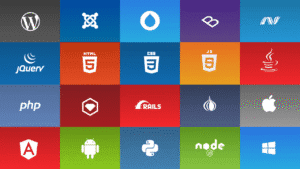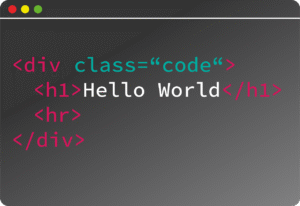Your Ultimate Guide to Understanding the Digital Future
Introduction
Web technology changes fast, shaping how we work, shop, learn, and connect. From simple websites to complex apps, it impacts nearly every part of daily life. But with all this innovation, many get confused about what’s really happening behind the scenes. That’s where knowing the basics and latest trends becomes essential, especially if you’re a developer, business owner, or just curious. In this guide, we’ll break down key questions and give you clear, practical answers. Expect insights, tips, and expert advice to make web tech easier to understand.
What Are Web Technologies and Why Are They Important?
Defining Web Technology
Web technology includes the tools and standards used to make websites and web apps. For example, HTML creates the structure of a webpage, CSS styles it, and JavaScript adds interactivity. Web servers store site data, while browsers display the content to users. Without these core pieces, the web as we know it wouldn’t exist. They work together to give us smooth, responsive online experiences.
The Significance of Web Tech in Modern Society
Web tech fuels everything from online shopping to social media. It helps businesses grow, keeps friends connected, and even enables online learning. The huge amount of web traffic—over 90% of internet sessions—shows how vital it’s become. As users demand faster, better, and more secure websites, companies keep investing in new web tech.
Future Outlook
Industry leaders like Gartner predict web tech will continue to evolve rapidly. Trends like AI, WebAssembly, and 5G will make websites faster and smarter. Staying updated with these changes helps developers create better tools and keeps consumers safer online. The web isn’t static; it’s always shifting, making ongoing learning crucial.
Common Questions About Web Development
What Are the Key Programming Languages for Web Development?
Most websites are built with HTML, CSS, and JavaScript. HTML creates the content structure, CSS styles it visually, and JavaScript makes it interactive. Popular frameworks like React and Angular use JavaScript to create complex apps more easily. Lately, languages like TypeScript—built on JavaScript—are gaining ground because they help catch errors early in development.
How Do Front-End and Back-End Development Differ?
Front-end is what users see—buttons, menus, pages. It’s all about making websites look good and work smoothly on all devices. Back-end handles behind-the-scenes tasks—server management, storage, and processing data. Tools like Node.js and PHP are common for back-end work, powering everything from login systems to online stores.
What Is Responsive Web Design?
Responsive design means making websites fit all screens—phones, tablets, desktops—without losing functionality. It’s like tailoring clothes to different sizes. With over 50% of web traffic coming from mobile devices, ignoring responsiveness risks losing visitors and sales.
How Do Web Hosting and Domain Names Work?
Web hosting is like renting space on the internet to store your website. A domain name is your website’s address, like www.example.com. DNS translates this address into an IP address that computers understand. When choosing a hosting service, look for reliability, speed, and good customer support.
Emerging Web Technologies and Trends
The Rise of Progressive Web Apps (PWAs)
PWAs blend the best of web and mobile apps. They load fast, work offline, and can be added to home screens. Big brands like Starbucks and Twitter already use PWAs, reducing load times and boosting user engagement. They’re a smart way to improve user experience without building separate apps.
The Impact of Artificial Intelligence and Machine Learning
AI makes websites smarter by personalizing content and automating tasks. Chatbots answer customer questions anytime, while recommendation engines suggest products you’re likely to buy. Platforms like Netflix and Amazon use AI to keep users engaged based on their preferences. Expect AI to become even more embedded in everyday web use.
The Adoption of WebAssembly
WebAssembly allows web apps to run faster by executing code close to native speed. It’s perfect for heavy tasks like gaming or 3D design in browsers. For instance, browser-based games and CAD tools now run smoothly thanks to WebAssembly, opening new possibilities for online applications.
The Evolution of Cybersecurity Measures
Web security keeps improving to block hackers and protect data. Common threats include SQL injections, cross-site scripting, and malware. Developers are adopting HTTPS, encryption, and regular updates to stay safe. Protecting user info builds trust and prevents costly breaches.
Frequently Asked Questions about Web Security
What Are Common Web Security Threats?
Hackers often attack through SQL injection, where they manipulate databases; XSS, which tricks browsers into running malicious code; and malware infections. High-profile incidents, like data leaks at major companies, show how vital security is. Protecting websites means understanding these threats and acting quickly.
How Can Developers Protect Web Applications?
Secure websites use HTTPS, encrypt data in transit, and keep software updated. Using firewalls and regular security audits also help. Developers should test for vulnerabilities and add layers of protection, so hackers find it harder to breach.
Why Is User Privacy Important?
Privacy laws like GDPR and CCPA limit what companies can do with personal data. Respecting users’ privacy builds trust and keeps your site compliant. Tips include being transparent about data collection, offering opt-outs, and securing personal info properly.
Conclusion
Web technology keeps transforming how we communicate, work, and shop. Knowing the basics and staying current with trends like PWAs, AI, and WebAssembly gives you an edge. Whether you’re building websites or just browsing, understanding these tools makes you smarter about what’s happening behind the scenes. Keep learning, stay updated, and use best practices to create and enjoy safer, faster web experiences. The future is online—make sure you’re ready.



































































































